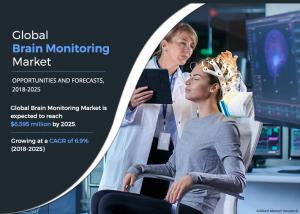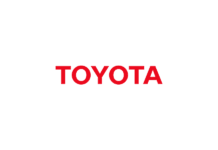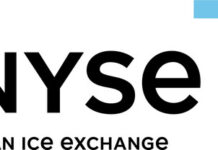
Brain Monitoring Infographics
• Increasing demand for non-invasive brain monitoring techniques: Non-invasive techniques such as EEG and MEG are gaining popularity
PUNE, MAHARASHTRA, INDIA, February 15, 2023 /EINPresswire.com/ — Brain monitoring refers to the continuous or intermittent monitoring of the brain’s physiological and electrical activity, as well as the blood flow and metabolic changes in the brain. The purpose of brain monitoring is to provide real-time data that can help diagnose and treat various neurological conditions, such as epilepsy, traumatic brain injury, and brain tumors. Brain monitoring techniques can include electroencephalography (EEG), magnetoencephalography (MEG), cerebral oximetry, and positron emission tomography (PET) scans, among others.
Allied Market Research has published a study report with the title Brain Monitoring Market Size is projected to Hit USD 6,595 million by 2025, growing at a CAGR of 6.9% During Forecast Period.
Get Sample PDF Report with Graphs and Figures Here: https://www.alliedmarketresearch.com/request-sample/2822
What are the Opportunities in Brain Monitoring Market?
• Increasing demand for non-invasive brain monitoring techniques: Non-invasive techniques such as electroencephalography (EEG) and magnetoencephalography (MEG) are gaining popularity due to their ability to provide real-time data without requiring invasive procedures.
• Growing prevalence of neurological disorders: Neurological disorders such as epilepsy, Parkinson’s disease, and Alzheimer’s disease are becoming increasingly common, creating a growing need for brain monitoring technologies to aid in their diagnosis and treatment.
• Advancements in technology: Advances in technology have led to the development of more sophisticated brain monitoring devices with greater accuracy and reliability. This is likely to drive demand for these devices in the future.
• Increasing use of brain monitoring in research: Brain monitoring is increasingly being used in research, particularly in the field of neuroscience. This is likely to create new opportunities for brain monitoring device manufacturers.
• Rising healthcare expenditure: Increasing healthcare expenditure in developed and developing countries is expected to drive demand for brain monitoring devices, as hospitals and clinics invest in new technologies to improve patient care.
What Are the Market Drivers for Brain Monitoring?
The brain monitoring market is being driven by several factors, including:
• Increasing prevalence of neurological disorders: There is a growing prevalence of neurological disorders such as Alzheimer’s, Parkinson’s, and epilepsy, which is increasing the demand for brain monitoring devices.
• Technological advancements: Advancements in brain monitoring technology, such as the development of non-invasive and wearable devices, have increased the adoption of these devices.
• Increasing geriatric population: As the global population ages, there is a growing demand for brain monitoring devices to monitor brain health and detect early signs of dementia and other age-related conditions.
• Rising awareness of brain health: People are becoming more aware of the importance of brain health and the need to monitor brain function to prevent cognitive decline and other disorders.
• Increasing research activities: There is a growing interest in research on brain function and neurological disorders, which is driving the development of new brain monitoring devices and technologies.
Top Key Players of Brain Monitoring
• Nihon Kohden Corporation
• Koninklijke Philips N.V.
• General Electric Company
• Siemens AG
• Medtronic plc
• Compumedics Limited
• CAS Medical Systems, Inc.
• Advanced Brain Monitoring, Inc.
• Neurosoft
• Natus Medical Incorporated
• others.
The brain monitoring market can be segmented based on technology, procedure, application, end user, and geography.
By technology, the market can be segmented into:
• Electroencephalography (EEG)
• Magnetoencephalography (MEG)
• Intracranial pressure (ICP) monitoring
• Cerebral oximetry
• Magnetic resonance imaging (MRI)
• Computed tomography (CT)
• Positron emission tomography (PET)
• Single-photon emission computed tomography (SPECT)
• Others
By procedure, the market can be segmented into:
• Invasive
• Non-invasive
By application, the market can be segmented into:
• Epilepsy
• Dementia
• Parkinson’s disease
• Huntington’s disease
• Headache disorders
• Sleep disorders
• Traumatic brain injury (TBI)
• Stroke
• Others
By end user, the market can be segmented into:
• Hospitals
• Clinics
• Diagnostic centers
• Ambulatory surgical centers
• Others
Purchase the Report: https://www.alliedmarketresearch.com/purchase-enquiry/2822
Our Market Research Solution Provides You Answer to Below Mentioned Question:
• Which are the driving factors responsible for the growth of market?
• Which are the roadblock factors of this market?
• What are the new opportunities, by which market will grow in coming years?
• What are the trends of this market?
• Which are main factors responsible for new product launch?
• How big is the global & regional market in terms of revenue, sales and production?
• How far will the market grow in forecast period in terms of revenue, sales and production?
• Which region is dominating the global market and what are the market shares of each region in the overall market in 2022?
• How will each segment grow over the forecast period and how much revenue will these segments account for in 2030?
• Which region has more opportunities?
By Region Outlook
• North America
(U.S., Canada, Mexico)
• Europe
(Germany, France, UK, Italy, Spain, Rest of Europe)
• Asia-Pacific
(Japan, China, India, Rest of Asia-Pacific)
• LAMEA
(Brazil, Saudi Arabia, South Africa, Rest of LAMEA)
Contact Details:
David Correa
USA/Canada (Toll Free): +1-800-792-5285, +1-503-894-6022
[email protected]
About Us
Allied Market Research (AMR) is a full-service market research and business-consulting wing of Allied Analytics LLP based in Portland, Oregon. Allied Market Research provides global
David Correa
Allied Analytics LLP
+ +1 503-894-6022
email us here
Visit us on social media:
Facebook
Twitter
LinkedIn
![]()































